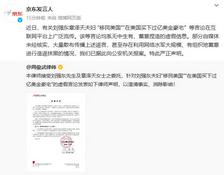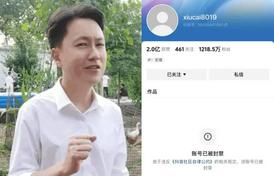知乎上看了一篇非常不错的博文:有没有必要阅读ANDROID源码 痛定思过,为了更好的深入android体系,决定学习android framework层源码,就从最简单的android异步消息机制开始吧。
(一)Handler的常规使用方式
public class MainActivity extends AppCompatActivity {
public static final String TAG = MainActivity.class.getSimpleName();
private TextView texttitle = null;
/**
* 在主线程中定义Handler,并实现对应的handleMessage方法
*/
public static Handler mHandler = new Handler() {
@Override
public void handleMessage(Message msg) {
if (msg.what == 101) {
Log.i(TAG, "接收到handler消息...");
}
}
};
@Override
protected void onCreate(Bundle savedInstanceState) {
super.onCreate(savedInstanceState);
setContentView(R.layout.activity_main);
texttitle = (TextView) findViewById(R.id.texttitle);
texttitle.setOnClickListener(new View.OnClickListener() {
@Override
public void onClick(View v) {
new Thread() {
@Override
public void run() {
// 在子线程中发送异步消息
mHandler.sendEmptyMessage(101);
}
}.start();
}
});
}
}可以看出,一般handler的使用方式都是在主线程中定义Handler,然后在子线程中调用mHandler.sendEmptyMessage();方法,然么这里有一个疑问了,我们可以在子线程中定义Handler么?
(二)如何在子线程中定义Handler?
我们在子线程中定义Handler,看看结果:
texttitle.setOnClickListener(new View.OnClickListener() {
@Override
public void onClick(View v) {
new Thread() {
@Override
public void run() {
Handler mHandler = new Handler() {
@Override
public void handleMessage(Message msg) {
if (msg.what == 101) {
Log.i(TAG, "在子线程中定义Handler,并接收到消息。。。");
}
}
};
}
}.start();
}
});点击按钮并运行这段代码:
可以看出来在子线程中定义Handler对象出错了,难道Handler对象的定义或者是初始化只能在主线程中? 其实不是这样的,错误信息中提示的已经很明显了,在初始化Handler对象之前需要调用Looper.prepare()方法,那么好了,我们添加这句代码再次执行一次:
texttitle.setOnClickListener(new View.OnClickListener() {
@Override
public void onClick(View v) {
new Thread() {
@Override
public void run() {
Looper.prepare();
Handler mHandler = new Handler() {
@Override
public void handleMessage(Message msg) {
if (msg.what == 101) {
Log.i(TAG, "在子线程中定义Handler,并接收到消息。。。");
}
}
};
}
}.start();
}
});再次点击按钮执行该段代码之后,程序已经不会报错了,那么这说明初始化Handler对象的时候我们是需要调用Looper.prepare()的,那么主线程中为什么可以直接初始化Handler呢?
其实不是这样的,在App初始化的时候会执行ActivityThread的main方法:
public static void main(String[] args) {
Trace.traceBegin(Trace.TRACE_TAG_ACTIVITY_MANAGER, "ActivityThreadMain");
SamplingProfilerIntegration.start();
// CloseGuard defaults to true and can be quite spammy. We
// disable it here, but selectively enable it later (via
// StrictMode) on debug builds, but using DropBox, not logs.
CloseGuard.setEnabled(false);
Environment.initForCurrentUser();
// Set the reporter for event logging in libcore
EventLogger.setReporter(new EventLoggingReporter());
AndroidKeyStoreProvider.install();
// Make sure TrustedCertificateStore looks in the right place for CA certificates
final File configDir = Environment.getUserConfigDirectory(UserHandle.myUserId());
TrustedCertificateStore.setDefaultUserDirectory(configDir);
Process.setArgV0("<pre-initialized>");
Looper.prepareMainLooper();
ActivityThread thread = new ActivityThread();
thread.attach(false);
if (sMainThreadHandler == null) {
sMainThreadHandler = thread.getHandler();
}
if (false) {
Looper.myLooper().setMessageLogging(new
LogPrinter(Log.DEBUG, "ActivityThread"));
}
// End of event ActivityThreadMain.
Trace.traceEnd(Trace.TRACE_TAG_ACTIVITY_MANAGER);
Looper.loop();
throw new RuntimeException("Main thread loop unexpectedly exited");
}可以看到原来Looper.prepare()方法在这里调用了,所以在其他地方我们就可以直接初始化Handler了。
并且我们可以看到还调用了:Looper.loop()方法,通过参考阅读其他文章我们可以知道一个Handler的标准写法其实是这样的:
Looper.prepare();
Handler mHandler = new Handler() {
@Override
public void handleMessage(Message msg) {
if (msg.what == 101) {
Log.i(TAG, "在子线程中定义Handler,并接收到消息。。。");
}
}
};
Looper.loop();(三)查看Handler源码 1)查看Looper.prepare()方法
// sThreadLocal.get() will return null unless you've called prepare().
static final ThreadLocal<Looper> sThreadLocal = new ThreadLocal<Looper>();
/** Initialize the current thread as a looper.
* This gives you a chance to create handlers that then reference
* this looper, before actually starting the loop. Be sure to call
* {@link #loop()} after calling this method, and end it by calling
* {@link #quit()}.
*/
public static void prepare() {
prepare(true);
}
private static void prepare(boolean quitAllowed) {
if (sThreadLocal.get() != null) {
throw new RuntimeException("Only one Looper may be created per thread");
}
sThreadLocal.set(new Looper(quitAllowed));
}可以看到Looper中有一个ThreadLocal成员变量,熟悉JDK的同学应该知道,当使用ThreadLocal维护变量时,ThreadLocal为每个使用该变量的线程提供独立的变量副本,所以每一个线程都可以独立地改变自己的副本,而不会影响其它线程所对应的副本。具体参考:彻底理解ThreadLocal 由此可以看出在每个线程中Looper.prepare()能且只能调用一次,这里我们可以尝试一下调用两次的情况。
/**
* 这里Looper.prepare()方法调用了两次
*/
Looper.prepare();
Looper.prepare();
Handler mHandler = new Handler() {
@Override
public void handleMessage(Message msg) {
if (msg.what == 101) {
Log.i(TAG, "在子线程中定义Handler,并接收到消息。。。");
}
}
};
Looper.loop();再次运行程序,点击按钮,执行该段代码:

我们继续看Looper对象的构造方法,可以看到在其构造方法中初始化了一个MessageQueue对象:
private Looper(boolean quitAllowed) {
mQueue = new MessageQueue(quitAllowed);
mThread = Thread.currentThread();
}综上小结(1):Looper.prepare()方法初始话了一个Looper对象并关联在一个MessageQueue对象,并且一个线程中只有一个Looper对象,只有一个MessageQueue对象。
2)查看Handler对象的构造方法
public Handler(Callback callback, boolean async) {
if (FIND_POTENTIAL_LEAKS) {
final Class<? extends Handler> klass = getClass();
if ((klass.isAnonymousClass() || klass.isMemberClass() || klass.isLocalClass()) &&
(klass.getModifiers() & Modifier.STATIC) == 0) {
Log.w(TAG, "The following Handler class should be static or leaks might occur: " +
klass.getCanonicalName());
}
}
mLooper = Looper.myLooper();
if (mLooper == null) {
throw new RuntimeException(
"Can't create handler inside thread that has not called Looper.prepare()");
}
mQueue = mLooper.mQueue;
mCallback = callback;
mAsynchronous = async;
}可以看出在Handler的构造方法中,主要初始化了一下变量,并判断Handler对象的初始化不应再内部类,静态类,匿名类中,并且保存了当前线程中的Looper对象。 综上小结(2):Looper.prepare()方法初始话了一个Looper对象并关联在一个MessageQueue对象,并且一个线程中只有一个Looper对象,只有一个MessageQueue对象。而Handler的构造方法则在Handler内部维护了当前线程的Looper对象
3)查看handler.sendMessage(msg)方法 一般的,我们发送异步消息的时候会这样调用:
mHandler.sendMessage(new Message());通过不断的跟进源代码,其最后会调用:
private boolean enqueueMessage(MessageQueue queue, Message msg, long uptimeMillis) {
msg.target = this;
if (mAsynchronous) {
msg.setAsynchronous(true);
}
return queue.enqueueMessage(msg, uptimeMillis);
}原来msg.target就是Handler对象本身;而这里的queue对象就是我们的Handler内部维护的Looper对象关联的MessageQueue对象。查看messagequeue对象的enqueueMessage方法:
boolean enqueueMessage(Message msg, long when) {
if (msg.target == null) {
throw new IllegalArgumentException("Message must have a target.");
}
if (msg.isInUse()) {
throw new IllegalStateException(msg + " This message is already in use.");
}
synchronized (this) {
if (mQuitting) {
IllegalStateException e = new IllegalStateException(
msg.target + " sending message to a Handler on a dead thread");
Log.w(TAG, e.getMessage(), e);
msg.recycle();
return false;
}
msg.markInUse();
msg.when = when;
Message p = mMessages;
boolean needWake;
if (p == null || when == 0 || when < p.when) {
// New head, wake up the event queue if blocked.
msg.next = p;
mMessages = msg;
needWake = mBlocked;
} else {
// Inserted within the middle of the queue. Usually we don't have to wake
// up the event queue unless there is a barrier at the head of the queue
// and the message is the earliest asynchronous message in the queue.
needWake = mBlocked && p.target == null && msg.isAsynchronous();
Message prev;
for (;;) {
prev = p;
p = p.next;
if (p == null || when < p.when) {
break;
}
if (needWake && p.isAsynchronous()) {
needWake = false;
}
}
msg.next = p; // invariant: p == prev.next
prev.next = msg;
}
// We can assume mPtr != 0 because mQuitting is false.
if (needWake) {
nativeWake(mPtr);
}
}
return true;
}可以看到这里MessageQueue并没有使用列表将所有的Message保存起来,而是使用Message.next保存下一个Message,从而按照时间将所有的Message排序;
4)查看Looper.Loop()方法
/**
* Run the message queue in this thread. Be sure to call
* {@link #quit()} to end the loop.
*/
public static void loop() {
final Looper me = myLooper();
if (me == null) {
throw new RuntimeException("No Looper; Looper.prepare() wasn't called on this thread.");
}
final MessageQueue queue = me.mQueue;
// Make sure the identity of this thread is that of the local process,
// and keep track of what that identity token actually is.
Binder.clearCallingIdentity();
final long ident = Binder.clearCallingIdentity();
for (;;) {
Message msg = queue.next(); // might block
if (msg == null) {
// No message indicates that the message queue is quitting.
return;
}
// This must be in a local variable, in case a UI event sets the logger
Printer logging = me.mLogging;
if (logging != null) {
logging.println(">>>>> Dispatching to " + msg.target + " " +
msg.callback + ": " + msg.what);
}
msg.target.dispatchMessage(msg);
if (logging != null) {
logging.println("<<<<< Finished to " + msg.target + " " + msg.callback);
}
// Make sure that during the course of dispatching the
// identity of the thread wasn't corrupted.
final long newIdent = Binder.clearCallingIdentity();
if (ident != newIdent) {
Log.wtf(TAG, "Thread identity changed from 0x"
+ Long.toHexString(ident) + " to 0x"
+ Long.toHexString(newIdent) + " while dispatching to "
+ msg.target.getClass().getName() + " "
+ msg.callback + " what=" + msg.what);
}
msg.recycleUnchecked();
}
}可以看到方法的内容还是比较多的。可以看到Looper.loop()方法里起了一个死循环,不断的判断MessageQueue中的消息是否为空,如果为空则直接return掉,然后执行queue.next()方法:
Message next() {
// Return here if the message loop has already quit and been disposed.
// This can happen if the application tries to restart a looper after quit
// which is not supported.
final long ptr = mPtr;
if (ptr == 0) {
return null;
}
int pendingIdleHandlerCount = -1; // -1 only during first iteration
int nextPollTimeoutMillis = 0;
for (;;) {
if (nextPollTimeoutMillis != 0) {
Binder.flushPendingCommands();
}
nativePollOnce(ptr, nextPollTimeoutMillis);
synchronized (this) {
// Try to retrieve the next message. Return if found.
final long now = SystemClock.uptimeMillis();
Message prevMsg = null;
Message msg = mMessages;
if (msg != null && msg.target == null) {
// Stalled by a barrier. Find the next asynchronous message in the queue.
do {
prevMsg = msg;
msg = msg.next;
} while (msg != null && !msg.isAsynchronous());
}
if (msg != null) {
if (now < msg.when) {
// Next message is not ready. Set a timeout to wake up when it is ready.
nextPollTimeoutMillis = (int) Math.min(msg.when - now, Integer.MAX_VALUE);
} else {
// Got a message.
mBlocked = false;
if (prevMsg != null) {
prevMsg.next = msg.next;
} else {
mMessages = msg.next;
}
msg.next = null;
if (DEBUG) Log.v(TAG, "Returning message: " + msg);
msg.markInUse();
return msg;
}
} else {
// No more messages.
nextPollTimeoutMillis = -1;
}
// Process the quit message now that all pending messages have been handled.
if (mQuitting) {
dispose();
return null;
}
// If first time idle, then get the number of idlers to run.
// Idle handles only run if the queue is empty or if the first message
// in the queue (possibly a barrier) is due to be handled in the future.
if (pendingIdleHandlerCount < 0
&& (mMessages == null || now < mMessages.when)) {
pendingIdleHandlerCount = mIdleHandlers.size();
}
if (pendingIdleHandlerCount <= 0) {
// No idle handlers to run. Loop and wait some more.
mBlocked = true;
continue;
}
if (mPendingIdleHandlers == null) {
mPendingIdleHandlers = new IdleHandler[Math.max(pendingIdleHandlerCount, 4)];
}
mPendingIdleHandlers = mIdleHandlers.toArray(mPendingIdleHandlers);
}
// Run the idle handlers.
// We only ever reach this code block during the first iteration.
for (int i = 0; i < pendingIdleHandlerCount; i++) {
final IdleHandler idler = mPendingIdleHandlers[i];
mPendingIdleHandlers[i] = null; // release the reference to the handler
boolean keep = false;
try {
keep = idler.queueIdle();
} catch (Throwable t) {
Log.wtf(TAG, "IdleHandler threw exception", t);
}
if (!keep) {
synchronized (this) {
mIdleHandlers.remove(idler);
}
}
}
// Reset the idle handler count to 0 so we do not run them again.
pendingIdleHandlerCount = 0;
// While calling an idle handler, a new message could have been delivered
// so go back and look again for a pending message without waiting.
nextPollTimeoutMillis = 0;
}
}可以看到其大概的实现逻辑就是Message的出栈操作,里面可能对线程,并发控制做了一些限制等。获取到栈顶的Message对象之后开始执行:
msg.target.dispatchMessage(msg);那么msg.target是什么呢?通过追踪可以知道就是我们定义的Handler对象,然后我们查看一下Handler类的dispatchMessage方法:
/**
* Handle system messages here.
*/
public void dispatchMessage(Message msg) {
if (msg.callback != null) {
handleCallback(msg);
} else {
if (mCallback != null) {
if (mCallback.handleMessage(msg)) {
return;
}
}
handleMessage(msg);
}
}可以看到,如果我们设置了callback(Runnable对象)的话,则会直接调用handleCallback方法:
private static void handleCallback(Message message) {
message.callback.run();
}即,如果我们在初始化Handler的时候设置了callback(Runnable)对象,则直接调用run方法。比如我们经常写的runOnUiThread方法:
runOnUiThread(new Runnable() {
@Override
public void run() {
}
});看其内部实现:
public final void runOnUiThread(Runnable action) {
if (Thread.currentThread() != mUiThread) {
mHandler.post(action);
} else {
action.run();
}
}而如果msg.callback为空的话,会直接调用我们的mCallback.handleMessage(msg),即handler的handlerMessage方法。由于Handler对象是在主线程中创建的,所以handler的handlerMessage方法的执行也会在主线程中。
综上可以知道: 1)主线程中定义Handler,直接执行:
Handler mHandler = new Handler() {
@Override
public void handleMessage(Message msg) {
super.handleMessage(msg);
}
};而如果想要在子线程中定义Handler,则标准的写法为:
// 初始化该线程Looper,MessageQueue,执行且只能执行一次
Looper.prepare();
// 初始化Handler对象,内部关联Looper对象
Handler mHandler = new Handler() {
@Override
public void handleMessage(Message msg) {
super.handleMessage(msg);
}
};
// 启动消息队列出栈死循环
Looper.loop();2)一个线程中只存在一个Looper对象,只存在一个MessageQueue对象,可以存在N个Handler对象,Handler对象内部关联了本线程中唯一的Looper对象,Looper对象内部关联着唯一的一个MessageQueue对象。
3)MessageQueue消息队列不是通过列表保存消息(Message)列表的,而是通过Message对象的next属性关联下一个Message从而实现列表的功能,同时所有的消息都是按时间排序的。
4)android中两个子线程相互交互同样可以通过Handler的异步消息机制实现,可以在线程a中定义Handler对象,而在线程b中获取handler的引用并调用sendMessage方法。
5)activity内部默认存在一个handler的成员变量,android中一些其他的异步消息机制的实现方法: Handler的post方法:
mHandler.post(new Runnable() {
@Override
public void run() {
}
});查看其内部实现:
public final boolean post(Runnable r)
{
return sendMessageDelayed(getPostMessage(r), 0);
}可以发现其内部调用就是sendMessage系列方法。。。
view的post方法:
public boolean post(Runnable action) {
final AttachInfo attachInfo = mAttachInfo;
if (attachInfo != null) {
return attachInfo.mHandler.post(action);
}
// Assume that post will succeed later
ViewRootImpl.getRunQueue().post(action);
return true;
}可以发现其调用的就是activity中默认保存的handler对象的post方法。
activity的runOnUiThread方法:
public final void runOnUiThread(Runnable action) {
if (Thread.currentThread() != mUiThread) {
mHandler.post(action);
} else {
action.run();
}
}判断当前线程是否是UI线程,如果不是,则调用handler的post方法,否则直接执行run方法。
参考文章:
Android异步消息处理机制完全解析,带你从源码的角度彻底理解
Android异步消息处理机制详解及源码分析
京东创始人刘强东和其妻子章泽天最近成为了互联网舆论关注的焦点。有关他们“移民美国”和在美国购买豪宅的传言在互联网上广泛传播。然而,京东官方通过微博发言人发布的消息澄清了这些传言,称这些言论纯属虚假信息和蓄意捏造。
日前,据博主“@超能数码君老周”爆料,国内三大运营商中国移动、中国电信和中国联通预计将集体采购百万台规模的华为Mate60系列手机。
据报道,荷兰半导体设备公司ASML正看到美国对华遏制政策的负面影响。阿斯麦(ASML)CEO彼得·温宁克在一档电视节目中分享了他对中国大陆问题以及该公司面临的出口管制和保护主义的看法。彼得曾在多个场合表达了他对出口管制以及中荷经济关系的担忧。
今年早些时候,抖音悄然上线了一款名为“青桃”的 App,Slogan 为“看见你的热爱”,根据应用介绍可知,“青桃”是一个属于年轻人的兴趣知识视频平台,由抖音官方出品的中长视频关联版本,整体风格有些类似B站。
日前,威马汽车首席数据官梅松林转发了一份“世界各国地区拥车率排行榜”,同时,他发文表示:中国汽车普及率低于非洲国家尼日利亚,每百户家庭仅17户有车。意大利世界排名第一,每十户中九户有车。
近日,一项新的研究发现,维生素 C 和 E 等抗氧化剂会激活一种机制,刺激癌症肿瘤中新血管的生长,帮助它们生长和扩散。
据媒体援引消息人士报道,苹果公司正在测试使用3D打印技术来生产其智能手表的钢质底盘。消息传出后,3D系统一度大涨超10%,不过截至周三收盘,该股涨幅回落至2%以内。
9月2日,坐拥千万粉丝的网红主播“秀才”账号被封禁,在社交媒体平台上引发热议。平台相关负责人表示,“秀才”账号违反平台相关规定,已封禁。据知情人士透露,秀才近期被举报存在违法行为,这可能是他被封禁的部分原因。据悉,“秀才”年龄39岁,是安徽省亳州市蒙城县人,抖音网红,粉丝数量超1200万。他曾被称为“中老年...
9月3日消息,亚马逊的一些股东,包括持有该公司股票的一家养老基金,日前对亚马逊、其创始人贝索斯和其董事会提起诉讼,指控他们在为 Project Kuiper 卫星星座项目购买发射服务时“违反了信义义务”。
据消息,为推广自家应用,苹果现推出了一个名为“Apps by Apple”的网站,展示了苹果为旗下产品(如 iPhone、iPad、Apple Watch、Mac 和 Apple TV)开发的各种应用程序。
特斯拉本周在美国大幅下调Model S和X售价,引发了该公司一些最坚定支持者的不满。知名特斯拉多头、未来基金(Future Fund)管理合伙人加里·布莱克发帖称,降价是一种“短期麻醉剂”,会让潜在客户等待进一步降价。
据外媒9月2日报道,荷兰半导体设备制造商阿斯麦称,尽管荷兰政府颁布的半导体设备出口管制新规9月正式生效,但该公司已获得在2023年底以前向中国运送受限制芯片制造机器的许可。
近日,根据美国证券交易委员会的文件显示,苹果卫星服务提供商 Globalstar 近期向马斯克旗下的 SpaceX 支付 6400 万美元(约 4.65 亿元人民币)。用于在 2023-2025 年期间,发射卫星,进一步扩展苹果 iPhone 系列的 SOS 卫星服务。
据报道,马斯克旗下社交平台𝕏(推特)日前调整了隐私政策,允许 𝕏 使用用户发布的信息来训练其人工智能(AI)模型。新的隐私政策将于 9 月 29 日生效。新政策规定,𝕏可能会使用所收集到的平台信息和公开可用的信息,来帮助训练 𝕏 的机器学习或人工智能模型。
9月2日,荣耀CEO赵明在采访中谈及华为手机回归时表示,替老同事们高兴,觉得手机行业,由于华为的回归,让竞争充满了更多的可能性和更多的魅力,对行业来说也是件好事。
《自然》30日发表的一篇论文报道了一个名为Swift的人工智能(AI)系统,该系统驾驶无人机的能力可在真实世界中一对一冠军赛里战胜人类对手。
近日,非营利组织纽约真菌学会(NYMS)发出警告,表示亚马逊为代表的电商平台上,充斥着各种AI生成的蘑菇觅食科普书籍,其中存在诸多错误。
社交媒体平台𝕏(原推特)新隐私政策提到:“在您同意的情况下,我们可能出于安全、安保和身份识别目的收集和使用您的生物识别信息。”
2023年德国柏林消费电子展上,各大企业都带来了最新的理念和产品,而高端化、本土化的中国产品正在不断吸引欧洲等国际市场的目光。
罗永浩日前在直播中吐槽苹果即将推出的 iPhone 新品,具体内容为:“以我对我‘子公司’的了解,我认为 iPhone 15 跟 iPhone 14 不会有什么区别的,除了序(列)号变了,这个‘不要脸’的东西,这个‘臭厨子’。









